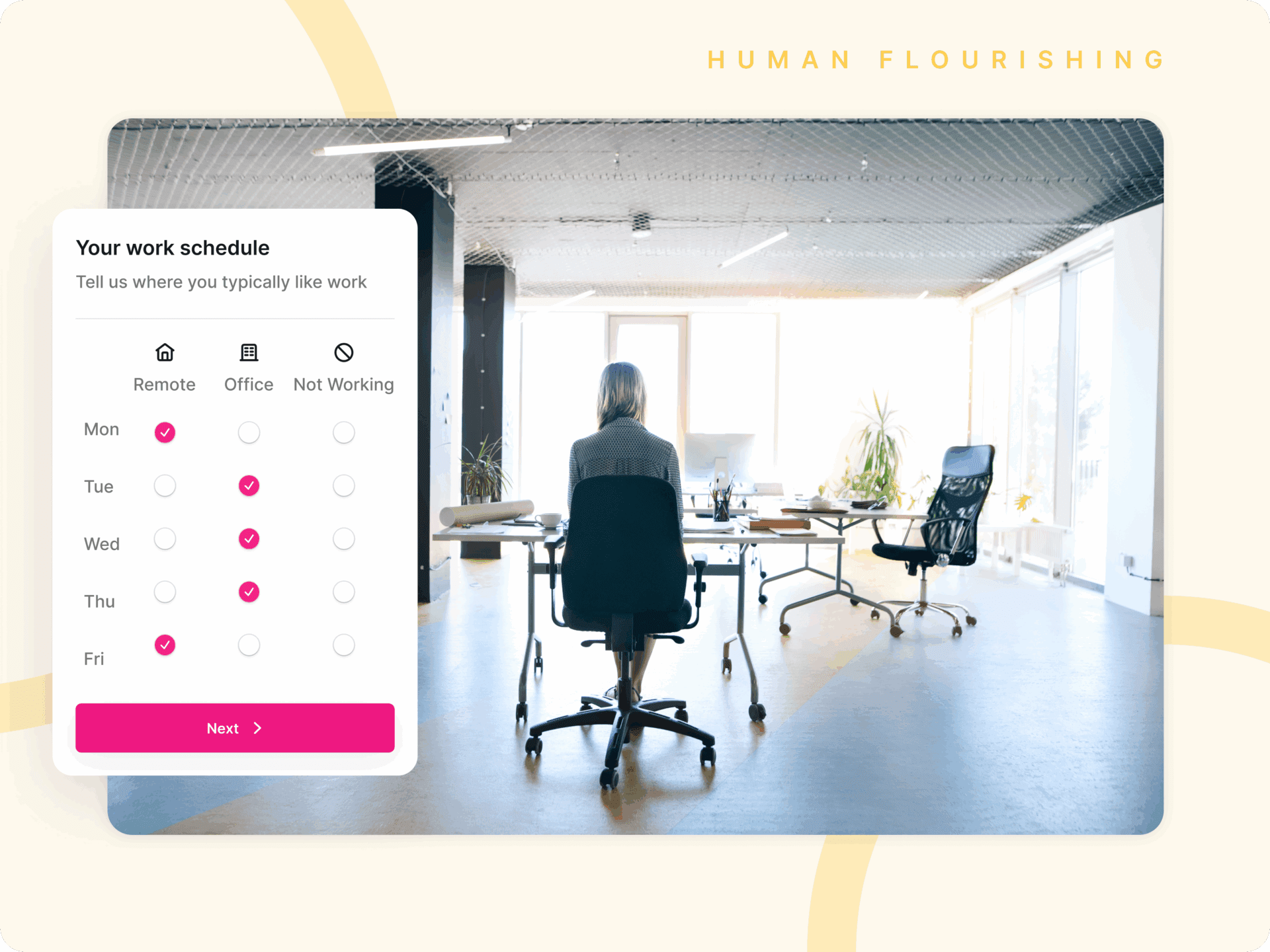Teamwork is critical for any type of business, but it’s even more so when managing a hybrid workforce. If your team does not operate with healthy dynamics. Or you’re often dealing with conflict resolution, you have no chance of growing and sustaining success. Just think about how teams work. Working in a physical office with your team leader and co-workers presents multiple opportunities each day to catch up with one another’s lives, address any issues, and talk through strategies.
When your team is distributed between physical and virtual environments, you may not be able to set up an impromptu meeting for group work or get the entire department together as frequently. Therefore, the details matter every time you connect with every member of your group.
Here are eight effective examples to help you in improving team dynamics as well as team performance, and how your company can apply them to your hybrid work model.
What Are Team Dynamics?
Every team consists of members with varying expertise, strengths, and weaknesses. Team dynamics are demonstrated, whether in a large or small group through collaboration, communication, and daily interactions. Positive group dynamics are easy to identify.
When team members behave in ways that benefit the entire team, it allows the team to form a group cohesiveness, generate better ideas, make better decisions, and have a higher chance of accomplishing their goals.
Many psychological factors can impact your team’s attitude and performance. Team dynamics is how you define and understand the unconscious factors that influence behavior and performance. While it is important to recognize individual ability, it is perhaps more important to figure out how each team member interacts with the team.
1. Communicating Effectively
Your primary challenge when leading a hybrid team will be figuring out how to communicate effectively with one another. It is impossible to maintain healthy and impactful working relationships or develop strong collaboration without proper and open communication.
One step you can take to ensure effective communication is to schedule frequent video calls. On-site teams interact daily in the office and even take breaks together, positively impacting productivity and group dynamics. That privilege is not available to hybrid team members. And it can be difficult for distributed teams to build the dynamics and culture necessary to work well together.
To foster healthy communication, you must invest in the necessary tools. Look to video conferencing software like Zoom or Microsoft Teams. Connect everyone to Slack, Telegram, or other messaging tools. And use file-sharing tools like Google Drive or Dropbox. It can also help combine different communication channels to accommodate specific communication goals. For instance, you could use Google Duo for a small, casual meeting and connect everyone on Zoom for larger-scale, official video calls.
One way to help your remote workers feel more included is to conduct video calls during work breaks. Set up calls that include your on-site and virtual team members to help foster good relationships and culture.
2. Distributing Information Consistently
Because they are in the physical workplace, on-site employees typically have more access to company information. Not only will they be connected to the organization’s internal networks, but they may also have quicker access to managers and other leaders who regularly work in the office.
Be mindful of how your virtual team members may not be receiving all the updates as their on-site coworkers. Try to make updates a priority so that all of your employees can contribute to your team’s tasks and projects equally.
Your remote workers should know about every team meeting, client meeting, and anything else that influences the team’s mission and success. In addition, the remote members of your team can accomplish even more when they’re able to communicate effectively — that’s where you’ll benefit from unique communication tools for hybrid workers.
3. Establishing Clear, Common Goals
Your company vision should be clear across all your teams and departments, regardless of where your employees are working. Unless you have a clearly defined goal that your team is pursuing, you risk having unmotivated employees who cannot genuinely engage in their work; instead, they are simply going through the motions and checking off their to-do lists.
Great teamwork always demonstrates that the sum is greater than the parts. Each of your team members should understand how their contribution fits into the company’s mission and how their role is integral to its overall success.
You might be shocked by how much more efficient and productive your team operates with a well-defined goal.
4. Laying Out Expectations
As with goals, each team member must know what is expected of them. And the only way that would be possible is to communicate it effectively.
Be intentional about making any specific behaviors, attitudes, or contributions you desire for your team crystal clear. For example, maybe you want your employees to share knowledge regularly, exercise superb problem-solving skills, and make effective impromptu decisions with the team.
Perhaps you want the primary focus to be on fostering teamwork and collaboration across the various teams in your company. Or maybe the most important thing to your organization is that everyone treats others with dignity and respect. Whatever your expectations are, make sure your team knows about them.
5. Rewarding Equally
As discussed, your remote and on-site employees should have equal access to critical company information. But you should also reward them equally for their hard work.
For instance, if your health and wellness program includes free memberships to a fitness center located near the office, some of your virtual team members may not be able to take advantage of them.
Make sure your business provides benefits and rewards that all of your employees can use. Or, come up with equally beneficial alternatives to offer your remote workers.
6. Meeting Occasionally
Until the pandemic, most employees had ample opportunities to develop meaningful and collaborative relationships with their coworkers in the office. With more and more people working remotely, this is more of a challenge. Transitioning back into the office after working remotely can present plenty of obstacles, especially when team members are used to handling meetings and solving problems from home.
It takes extra effort to develop healthy bonds with team members, meaning you must figure out how to bring employees together now and then.
Luckily, you don’t have to handle the transition back into in-person work by yourself. With help from Kadence’s software, you’ll have all the tools you need to help your team members use their in-person work time as effectively as possible.
7. Managing Stress And Burnout
Every team that has changed to a hybrid work model is prone to stress, to nothing of the pandemic-related health and financial stressors. Plus, some of your virtual team members may have to spend time caring for their children while juggling their in-office and virtual responsibilities.
Furthermore, employees in the office may have to take on a heavier workload to fill the gaps that remote workers cannot fill. For instance, your on-site employees may need to field phone calls, keep the office tidy, or print and send documents to remote team members.
Make sure all of your team understands burnout. They should know what it is, identify early signs, and how to right the ship if they are becoming overwhelmed. One practical way to help your team combat burnout is to create a flexible schedule and suggest that they make time each day for relaxation.
8. Being Transparent
Finally, if you are going to have healthy hybrid team dynamics, all of your employees should understand how and why consequential decisions for the company are made. Whether good or bad, you should share all results so that your team members can celebrate the victories and make the necessary changes to minimize losses.
Transparency is more important than ever for organizations. If it isn’t already, bake it into your company culture and team operations. By openly communicating within your team, you will yield better results over the long haul.
Final Thoughts
Your company is not going to experience long-term success without great teamwork. Learning how to navigate group dynamics is essential to fostering healthy communication and collaboration in a hybrid work environment. Consider the examples above as you evaluate your team and find ways to improve your dynamics. Make sure you use a simple and powerful hybrid working software to help your team coordinate meetings and solve problems!
To explore how Kadence can transform your team collaboration at your workplace, book a demo and see it in action.




